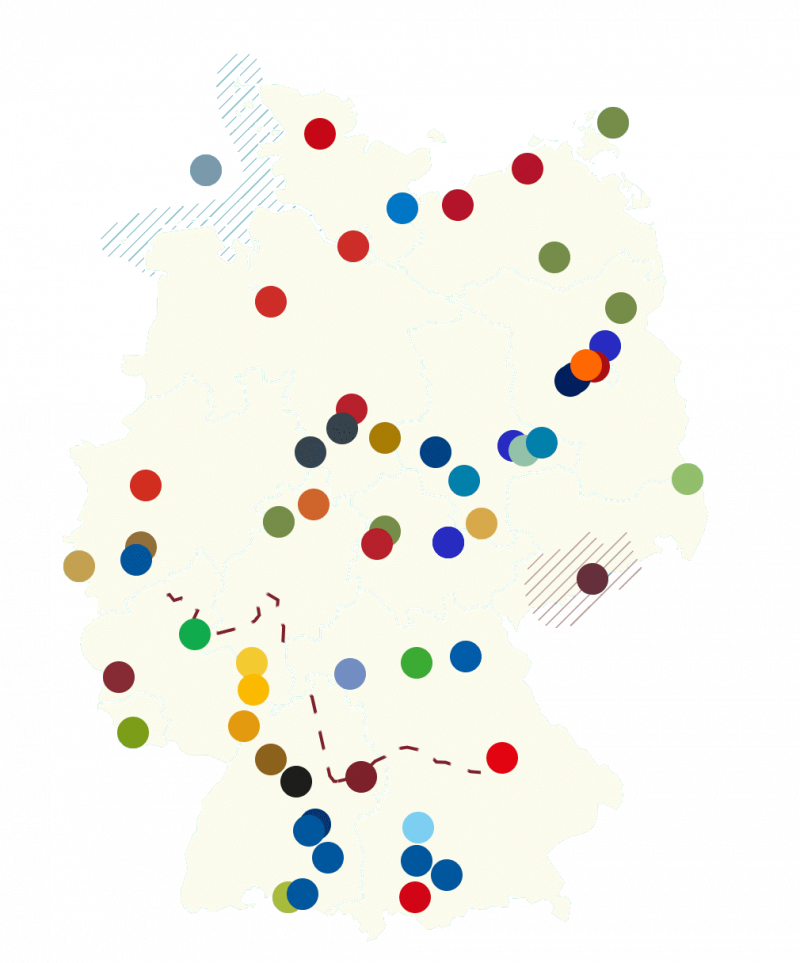UNESCO World Heritage Sites in Germany
From the Wadden Sea to Cologne Cathedral, the old beech forests to Augsburg's water management system - a total of 52 cultural and natural heritage sites in Germany belong to the UNESCO World Heritage.
There are currently 1,199 UNESCO World Heritage sites in 168 countries worldwide. 52 of them are located in Germany. They include cultural landscapes and parks, unique natural areas, built testimonies to social and technological development and masterpieces of human creative genius.
Together, these sites tell diverse stories about how people live, reside and work around the world and provide fascinating insights into the development of our planet. They share an outstanding universal value, that is, their significance not only for national or local communities, but for all of humanity.
- Aachen Cathedral
- Speyer Cathedral
- Würzburg Residence with the Court Gardens and Residence Square
- Pilgrimage Church of Wies
- Castles of Augustusburg and Falkenlust at Brühl
- St Mary's Cathedral and St Michael's Church at Hildesheim
- Roman Monuments, Cathedral of St Peter and Church of Our Lady in Trier
- Frontiers of the Roman Empire
- Hanseatic City of Lübeck
- Palaces and Parks of Potsdam and Berlin
- Abbey and Altenmünster of Lorsch
- Mines of Rammelsberg, Historic Town of Goslar and Upper Harz Water Management System
- Maulbronn Monastery Complex
- Town of Bamberg
- Collegiate Church, Castle and Old Town of Quedlinburg
- Völklingen Ironworks
- Messel Pit Fossil Site
- Bauhaus and its Sites in Weimar, Dessau and Bernau
- Cologne Cathedral
- Luther Memorials in Eisleben and Wittenberg
- Classical Weimar
- Museumsinsel (Museum Island), Berlin
- Wartburg Castle
- Garden Kingdom of Dessau-Wörlitz
- Monastic Island of Reichenau
- Zollverein Coal Mine Industrial Complex in Essen
- Historic Centres of Stralsund and Wismar
- Upper Middle Rhine Valley
- Muskauer Park / Park Mużakowski
- Town Hall and Roland on the Marketplace of Bremen
- Old town of Regensburg with Stadtamhof
- Ancient and Primeval Beech Forests of the Carpathians and Other Regions of Europe
- Berlin Modernism Housing Estates
- Wadden Sea
- Fagus Factory in Alfeld
- Prehistoric Pile Dwellings around the Alps
- Margravial Opera House Bayreuth
- Bergpark Wilhelmshöhe
- Carolingian Westwork and Civitas Corvey
- Speicherstadt and Kontorhaus District with Chilehaus
- The Architectural Work of Le Corbusier, an Outstanding Contribution to the Modern Movement
- Caves and Ice Age Art in the Swabian Jura
- Archaeological Border complex of Hedeby and the Danevirke
- Naumburg Cathedral
- Erzgebirge/Krušnohoří Mining Region
- Water Management System of Augsburg
- Frontiers of the Roman Empire – The Danube Limes (Western Segment)
- Frontiers of the Roman Empire – The Lower German Limes
- Mathildenhöhe Darmstadt
- ShUM Sites of Speyer, Worms and Mainz
- The Great Spa Towns of Europe
- Jewish-Medieval Heritage of Erfurt
Discover these sites on our online Interactive Map! (Please note that the interactive Map is provided only in German.)

On UNESCO World Heritage Day, the 52 World Heritage sites in Germany offer a diverse program that invites visitors to explore and discover their cultural and natural heritage. Guided tours and lectures, music and activities not only raise public awareness of the World Heritage sites as places of particularly careful preservation, but also strengthen their role as communicators of UNESCO's principles.